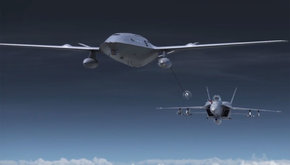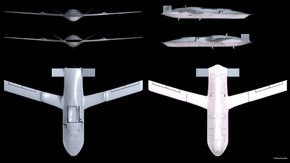FORBIN
Member
Elegant ! and very silencious
Attachments
-
61.6 KB Views: 13


Replace Ticonderoga and mainly to counter Chinese 055 it is certain in this case use from Flight 3 Burke especialy new SPY-6 but to have a CG weapons load 128 missiles in silos but only a main gun normaly a Zumwalt hull size is what USN need the Burke hull very stable is excellent but too small.The Navy expects to place it's first order for the (Large) Future Surface Combatant in 2023. Current thinking is to match the capability of the Flight 3 Burke eg.AMDR with innovations from the DDG-1000 Program, notably the propulsion plant. No indication if the tumblehome hull will be adopted though the new design will overcome space limitations of the former.
Navy's Next Large Surface Combatant Will Draw From DDG-51, DDG-1000 - But Don't Call it a Destroyer Yet - USNI News
No offense, but you have no idea what you are talking about. The difference between a vessel like a Ticonderoga-class CG, and an Arleigh Burke-class DDG or Zumwalt-class DDG has nothing to do with the vessel size or weapons loadout, and everything to do with the role of the vessel. In this specific case, the USN has a command or flagship role for cruisers which destroyers lack.Replace Ticonderoga and mainly to counter Chinese 055 it is certain in this case use from Flight 3 Burke especialy new SPY-6 but to have a CG weapons load 128 missiles in silos but only a main gun normaly a Zumwalt hull size is what USN need the Burke hull very stable is excellent but too small.
No offense also but we are not agree the Burke class hull is indeed limited small for very big radars the hull can't support more big islands superstructures/and why finaly initial radar planned more big thanSPY-6 was not build 4.3 m is the max size i had read can't invent... and BTW why exist a project for a San Antonio " CG " for justely more big radars more capable especaily for ABM defense.No offense, but you have no idea what you are talking about. The difference between a vessel like a Ticonderoga-class CG, and an Arleigh Burke-class DDG or Zumwalt-class DDG has nothing to do with the vessel size or weapons loadout, and everything to do with the role of the vessel. In this specific case, the USN has a command or flagship role for cruisers which destroyers lack.
As for the suggestion that an Arleigh Burke-class hull is too small... it is considerably larger than the hulls of many other destroyer classes currently in service with foreign navies. In addition, the Flight III Burke is planned to have a full load displacement the same as a Ticonderoga-class CG. By the same token, a Zumwalt-class DDG, which has less VLS cells than either the Ticonderoga-class CG and all the Arleigh Burke-class DDG Flights, yet has ~60% greater displacement.
The missile load out for USN vessels has to do with the role(s) that specific naval vessel will be tasked with. Suggesting that future USN vessels need to be massive surface vessels packed with VLS cells, is going back to the dismissed concept of the Arsenal ship, and ignores the work the US has been doing on developing CEC and the concept of distributed lethality.
Some of the posters here are experts in their fields so, they definitely know what they are talking about and others are defence professionals (designated by blue tags) who are quite knowledgeable about defence. You are showing your lack of knowledge by your posting content. I would suggest that you do some basic research and learning first.No offense also but we are not agree the Burke class hull is indeed limited small for very big radars the hull can't support more big islands superstructures/and why finaly initial radar planned more big thanSPY-6 was not build 4.3 m is the max size i had read can't invent... and BTW why exist a project for a San Antonio " CG " for justely more big radars more capable especaily for ABM defense.
And for the Zumwalt no she have an inferior missile load coz the 80 cellules are in 4 different areas in addition without 1 main gun there are room for easy 30 cellules, it is a matter of arrangement to have a ship less vulnerable.
That might be because there is no "project" to develop the San Antonio-class LPD into a CG. There reportedly is an initiative which is looking at a replacement for the Ticonderoga-class CG, much like there had been a number of next gen cruiser concepts which had been looked at between 2000 and ~2007, with some of the concepts making their way into the Zumwalt-class DDG. One of the issues with the current crop of concepts being bandied about is that apparently the theoretical future large surface combatant would feature some very power hungry systems like lasers and railguns, as well as having powerful radars, EW and other systems. This would then likely require the concept vessel to have a greater power generation capability than most surface combatants are currently capable of.No offense also but we are not agree the Burke class hull is indeed limited small for very big radars the hull can't support more big islands superstructures/and why finaly initial radar planned more big thanSPY-6 was not build 4.3 m is the max size i had read can't invent... and BTW why exist a project for a San Antonio " CG " for justely more big radars more capable especaily for ABM defense.
And for the Zumwalt no she have an inferior missile load coz the 80 cellules are in 4 different areas in addition without 1 main gun there are room for easy 30 cellules, it is a matter of arrangement to have a ship less vulnerable.
Ah, IEP - like the Type 45 & QE classes, Juan Carlos I, the Aussie LHDs & presumably the one the Turks are building.I think the most important feature of the Zumwalt class that will be incorporated into a future large combatant ship is its propulsion system. IEP offers an efficient way to move the vessel and offers the huge electrical generation capacity needed for railgun, lasers, and high performance radars. ....
That article is a real mixed bag, some ideas to like and others which show a lack ofstrategic and sustainment appreciation.Diesel Submarines: The Game Changer the U.S. Navy Needs
Another article on the proponent of SSK in USN. Arguments that too speed up process of adjustment in US shipbuilding industry on SSK, they can simply cooperate with Japanese shipyards on design and support for refitting US shipyards on building SSK.
Noticebly the article champion using Japanese Soryu class as based for US SSK. Determining that a dozen US SSK in Pacific station in Japan (or perhaps in other friendly based like South Korea or Singapore) can provide more presence of USN that are more beneficial than current stationing of LCS.
That argument seems my oppinion have merit on the side that Japanese (also South Korean, Singapore or Australia for that matter) has already build infrastuctures for SSK, that can be used by USN in supporting station their own SSK in Pacific. Instead of SSN that has to go back to US for support.
Also by US building their own SSK, can also beneficial for Taiwan that so far has difficulty obtaining modern SSK due to reluctance of SSK suppliers on count of China opposition. US as SSK supplier will mitigate that, as US now is the only military supplier for Taiwan that can risk opposition from China.
Interesting concept for US to build their own SSK force, for forward deployment in Pacific..or event in Europe.
